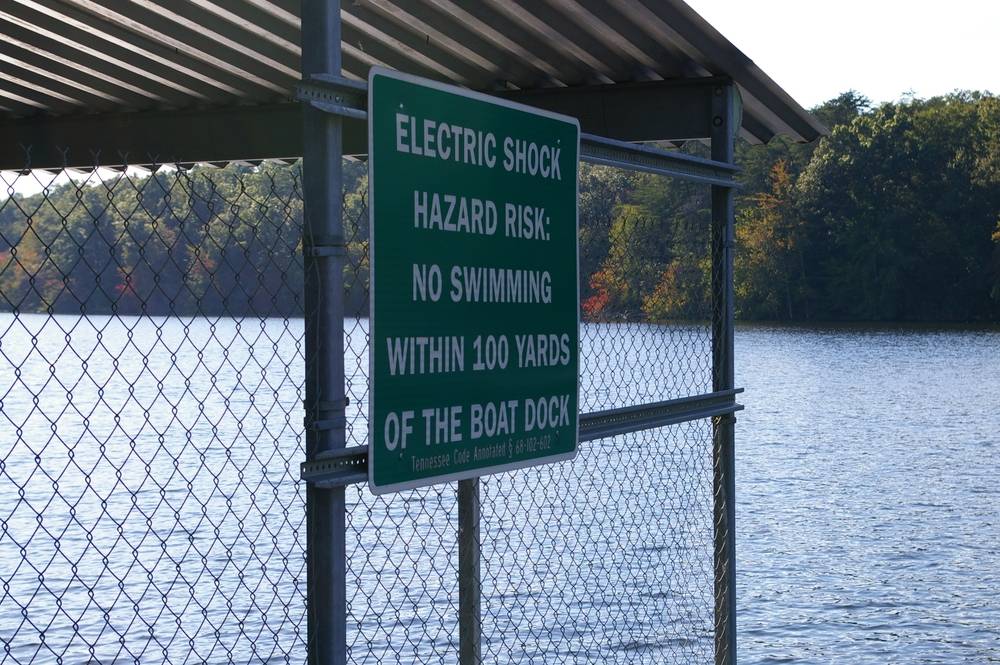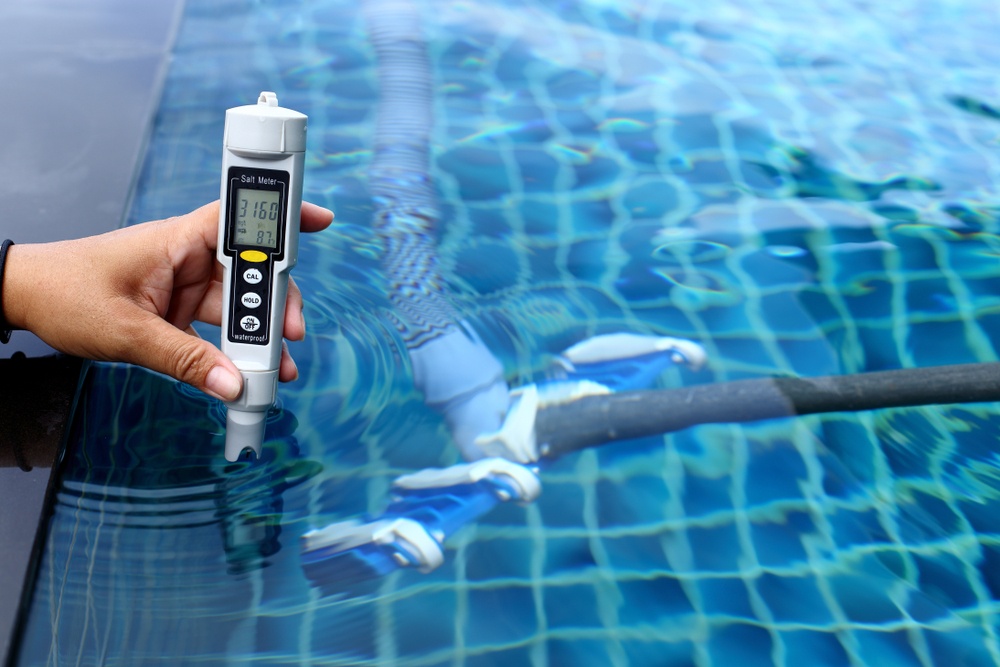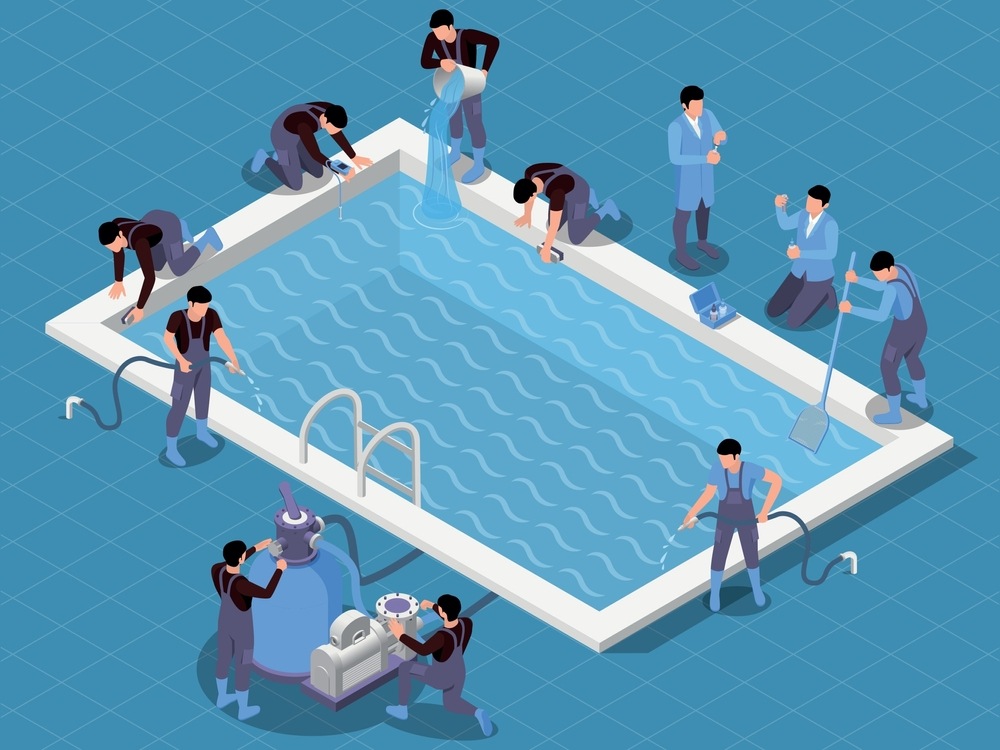
Think Your Pool is Safe? Electrical Hazards You Didn’t Know!

At PoolForce, our primary goal is to ensure that you enjoy a refreshing and safe dive every time you plunge into your pool. One major concern that often goes unnoticed is the potential electrical hazards associated with swimming pools. While many think of slips, trips, and waterborne illnesses when it comes to pool dangers, few consider the threat of electricity. However as the combination of water, chlorine, and electrical equipment can pose a significant risk, it’s crucial to stay informed and safeguard against these hazards.
Latest


How to Maintain the Recommended Salt level in your Pool in 2024

How Do You Properly Clean a Fiberglass Pool in 2024?
Categories
The Silent Threat of Electricity in Pools
Each year, millions globally delight in the refreshing embrace of swimming pools. But lurking beneath the surface, often overlooked, is the silent threat of pool electrical hazards. Pools, by their nature, incorporate a variety of electrical equipment — from water pumps to lighting systems. Combine this with the fact that both water and chlorine are excellent conductors of electricity, and you’ve got a potentially lethal mix.
According to the United States Consumer Product Safety Commission, between 1990 and 2003, electrical equipment in and around swimming pools resulted in approximately 60 deaths and 50 grave injuries. The period from 2003 to 2014 saw 14 reported deaths due to electrocution in swimming pools. One particularly harrowing incident occurred on Labor Day weekend 2016 in Raleigh, N.C., where a faulty water pump connected to a degraded electrical system caused a fatal electrification of a swimming pool. Disturbingly, this system hadn’t undergone testing or inspection in nearly three decades.
How Electricity Interacts with the Human Body
It’s a lesser-known fact that our bodies naturally carry an electrical current, essential for everyday functions like movement and breathing. But when this natural balance is disrupted by an external electrical source, the consequences can be dire. Even minor currents introduced into the body can lead to painful shocks, potentially resulting in a loss of muscle control. This loss can be especially dangerous while swimming, as it can lead to drowning, a phenomenon termed as ‘electric shock drowning’ or ESD. On the more severe end of the spectrum, high levels of current can result in electrocution, leading to fatalities. This is often characterized by outcomes like cardiac and respiratory arrest, severe nerve damage, burns, and intense muscular contractions.
Recognizing Pool Electrical Hazards
Spotting the Signs of Electrical Exposure
Awareness is the first step to ensuring safety. If you ever feel a tingling sensation while swimming, it could be an indicator of an electrical current in the water. Other signs include sudden, unexplained pain, difficulty swimming, or experiencing a minor shock when touching metal equipment like ladders or rails.
For swimmers, the immediate course of action should be to exit the pool, avoiding any metal fixtures. If you notice someone appearing attached to a metal rail or ladder, or if a swimmer becomes motionless unexpectedly, they might be undergoing an electrical shock. In such scenarios, it’s imperative not to jump into the water. Instead, the recommended approach is to use a fiberglass shepherd’s crook or a rescue hook to pull them out, ensuring you don’t touch any metal components during the rescue. If such equipment isn’t on hand, turning off all electrical power and dialing emergency services should be the immediate response.
Electrical Components in Pools
At PoolForce, we believe in empowering our community with knowledge. So, it’s essential to familiarize yourself with the typical electrical equipment that might be present in and around pools. This includes:
- Water pumps and heaters that regulate temperature and circulation
- Receptacles and power switches to control various devices
- Lighting systems, including underwater fixtures
- Fans, decorative fountains, and underwater vacuums for maintenance and aesthetics
- Extension cords, underground wiring, and other cord-and-plug equipment like radios, speakers, or even refrigerators
Taking Preventive Measure
Ensuring your pool’s safety is a multifaceted approach. Firstly, every electrically powered device has the potential to introduce an unwanted electrical current into your pool. Thus, knowing the location of power supplies, emergency shut-offs, panel boxes, circuit breakers, and switches is crucial.
Bonding
Bonding is a safety technique that involves connecting metallic parts to establish a conductive path. This ensures electrical continuity and the capacity to direct any imposed current safely. According to the National Electric Code (NEC) 2014-680.26, pool structures’ metal parts must be bonded with a solid copper conductor of at least 8 American Wire Gauge (AWG). This includes ladders, handrails, diving boards, and even the fencing around the pool.
Grounding: A Vital Safety Mechanism
Another crucial aspect of pool electrical safety is grounding. The Occupational Safety and Health Administration (OSHA) defines grounding as creating an intentional connection to the earth. This connection prevents voltage build-up, which could pose hazards to both equipment and individuals. Essentially, grounding involves linking the live part (which conducts electricity in typical scenarios) to the earth, ensuring a safe loop back to the power source. OSHA mandates effective, permanent, and continuous grounding for circuits, equipment, and enclosures. It’s a critical step to ensure that the pool environment remains electrically safe.
The Role of Ground Fault Circuit Interrupters (GFCI)
GFCIs are vital devices designed to shut off electrical power if a circuit surpasses a predetermined safety limit. Given their importance in wet locations, OSHA requires the installation of GFCIs. To bolster electrical safety in and around pools, PoolForce recommends GFCIs be set up in:
- Underwater lighting circuits operating above 15 volts
- All electrical equipment associated with pools, spas, and hot tubs
- Outdoor and indoor receptacles within 20 feet of the pool
- And other areas as per local codes and NEC requirements
Further Recommendations and Inspections
While the state of North Carolina doesn’t mandate electrical system checks for public or community pools, we at PoolForce firmly believe in regular inspections. We advocate hiring qualified electricians to inspect and upgrade outdated wiring to meet current electrical code standards. It’s vital not only after modifications or repairs but as a routine practice. Pool operators should also frequently evaluate electrical equipment, checking GFCI outlets for proper functionality, and inspecting extension cords for damages like cuts and nicks.
Additionally, several innovative devices on the market can detect electrical currents in bodies of water and trigger alarms. These devices, ranging from floating buoys to fixed installations on ladders or docks in pools, serve as an early warning system against unforeseen electrical hazards.
With pools being a staple of relaxation and recreation, ensuring safety should always be paramount. At PoolForce, we’re dedicated to empowering our customers with the knowledge and tools they need to enjoy their pool or pools without the lurking shadow of electrical hazards. By staying informed and proactive, we can all look forward to countless safe and refreshing dips in the pool.
Latest

Are Fiberglass Pools Good for Cold Climates?

How to Maintain the Recommended Salt level in your Pool in 2024

How Do You Properly Clean a Fiberglass Pool in 2024?
Categories
YOU'RE NOT IN THIS ALONE
We are with you every splash of the way
Need a pool fix or looking for an upgrade? We’re just one click away to help with all your pool needs.

